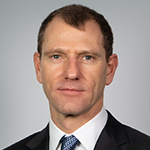Institutional Money (06.04.2021) - The unprecedented nature of the pandemic paved the way for aggressive and, at times, unorthodox stimulus measures; however, these were crucial for ensuring smooth market functioning and delivering accommodative financial conditions at the height of the crisis.
One of the most significant steps taken was when the US Federal Reserve went beyond what it did during the global financial crisis (GFC) and purchased corporate bonds for the first time. We viewed this announcement not only as a line in the sand for credit spreads, but also one in which investors should take comfort, as the Fed backstop should come into play if there is any significant and sustained widening.
We expect that the vaccine rollout will allow economies to gradually normalise and reopen as the year progresses, which leaves us bullish on the growth outlook for this year. Our conviction is supported by our belief that policymakers will continue to provide the tailwind for this recovery, rather than acting as a barrier to it. Therefore, even though market participants are pricing in monetary policy tightening, central banks are continuing to push back on this, which should keep front-end rates anchored, whilst longer-term rates can continue to rise on revised growth expectations. Crucially, we think that once central banks are finally ready to tighten their policies, this will have been largely priced in and therefore well digested by risk markets, in contrast to what was observed during 2013’s “Taper Tantrum”, when markets were caught off guard.
One of the main reasons for central banks’ pushing back on tightening expectations is the change in how they react, in particular the Fed. The Fed’s maximum employment aim is now a broad-based and inclusive goal which we see as sending out an inherently dovish message. The Fed will look to ensure that all minority groups are able to benefit from this recovery, which will probably require an overshoot of aggregate employment targets. The Fed’s new average inflation target framework also suggests a more patient approach to tightening, as they will now be comfortable with inflation above 2% for an extended period of time, given that it has been below 2% for so long. This is a major divergence from what had been observed under the previous leadership, when former Chair Janet Yellen looked to tighten policy at the first signs of inflationary pressures building up.
The ECB’s dovish bias could already be seen at the latest meeting, where, given lower inflation, less fiscal support and a slower vaccine rollout compared with the US, the Governing Council took a much more sensitive approach to any risks of tightening financial conditions. As a result, they announced an increase in the pace of QE purchases through their PEPP programme for the coming quarter in a bid to manage long-end yields.
From a fiscal perspective, the response to the pandemic was also impressive, with stimulus measures provided in 2020 amounting to over 5% of global GDP and clearly dwarfing what was seen after the GFC. Whilst this sort of action provided a much-needed buffer for incomes, we believe that this support will continue, even as the labour market recovers. For example, in the US, Treasury Secretary Yellen has made it clear that with interest rates close to historical lows, now is the time to “go big” on fiscal policy, which the new administration has already done, recently passing their initial fiscal package worth a massive 9% of US GDP and we now await the details of the upcoming infrastructure bill. Even in the EU, regional differences were put aside for the bloc to come together to produce an EU recovery fund; furthermore, the appointment of Mario Draghi as the Italian prime minister provides hope that the funds will be put to good use and support peripheral European growth in the coming years.
In terms of markets, we expect credit spreads to remain at current levels or to trend lower. In particular, higher-yielding asset classes, such as global high yield and AT1s, may see spreads return to their pre-pandemic lows. Interest rates are likely to continue to rise as economies continue to recover and the demand for safe-haven government bonds wanes, leading us to favour shorter interest rate exposures at the current juncture.

Philippe Gräub
Head of Global & Absolute Return Fixed Income
Go to his Linkedin profile.

Bernard McGrath
Investment Specialist
Go to his Linkedin profile.








